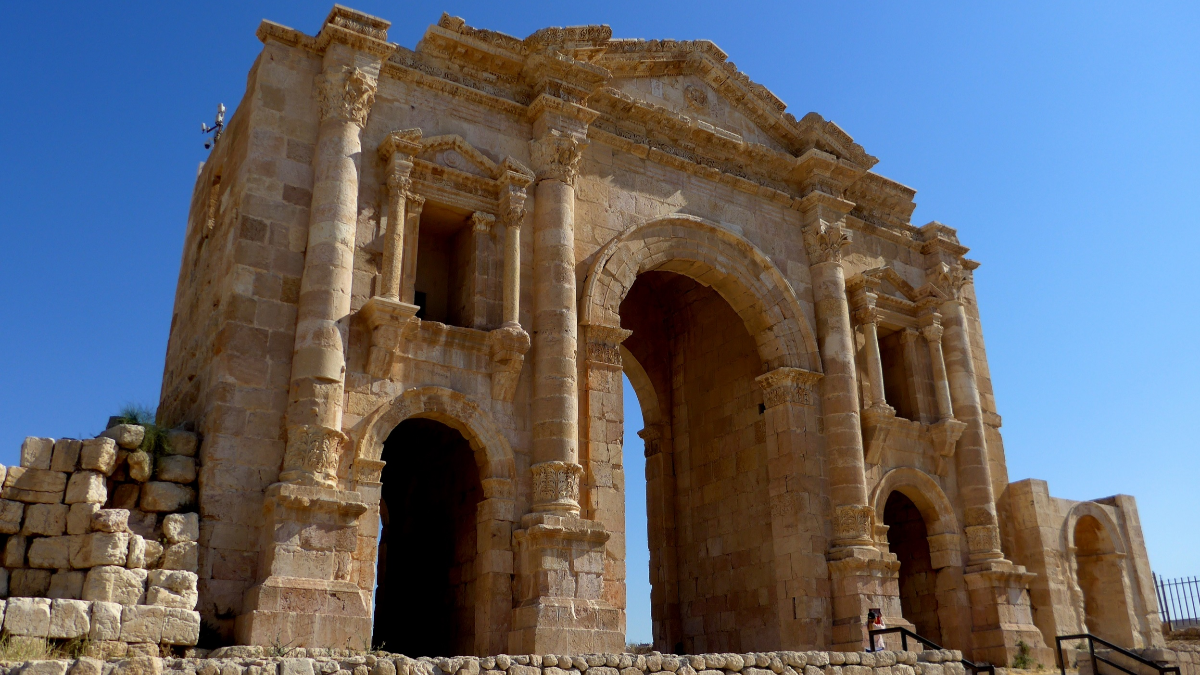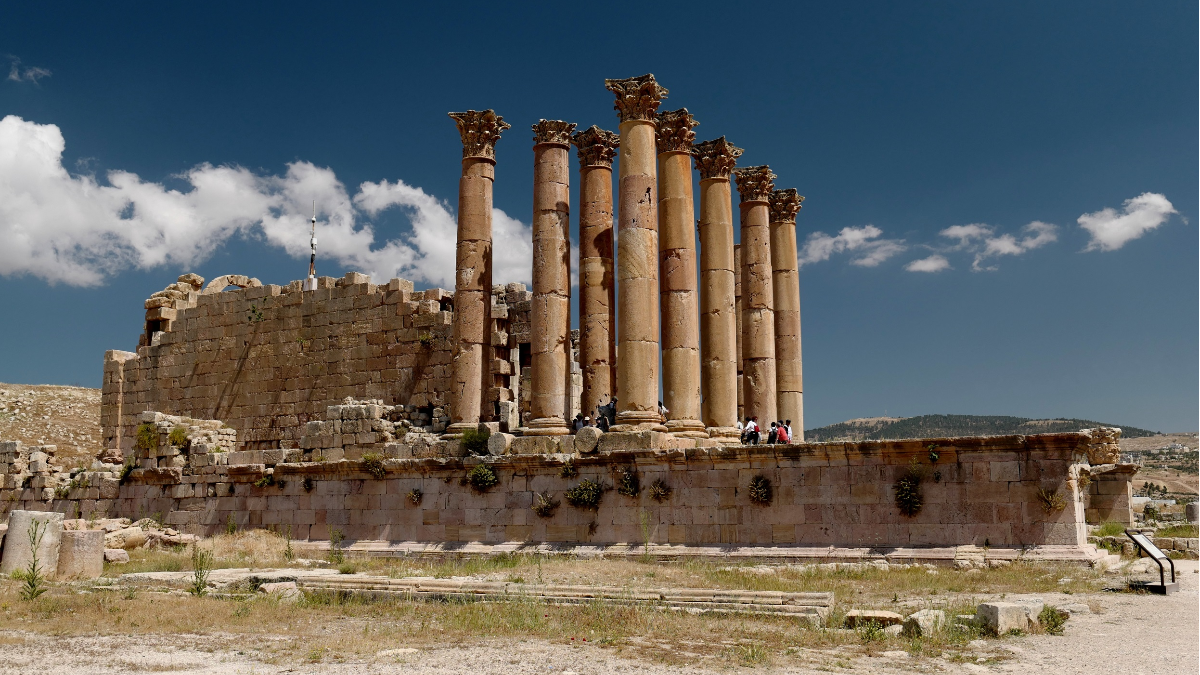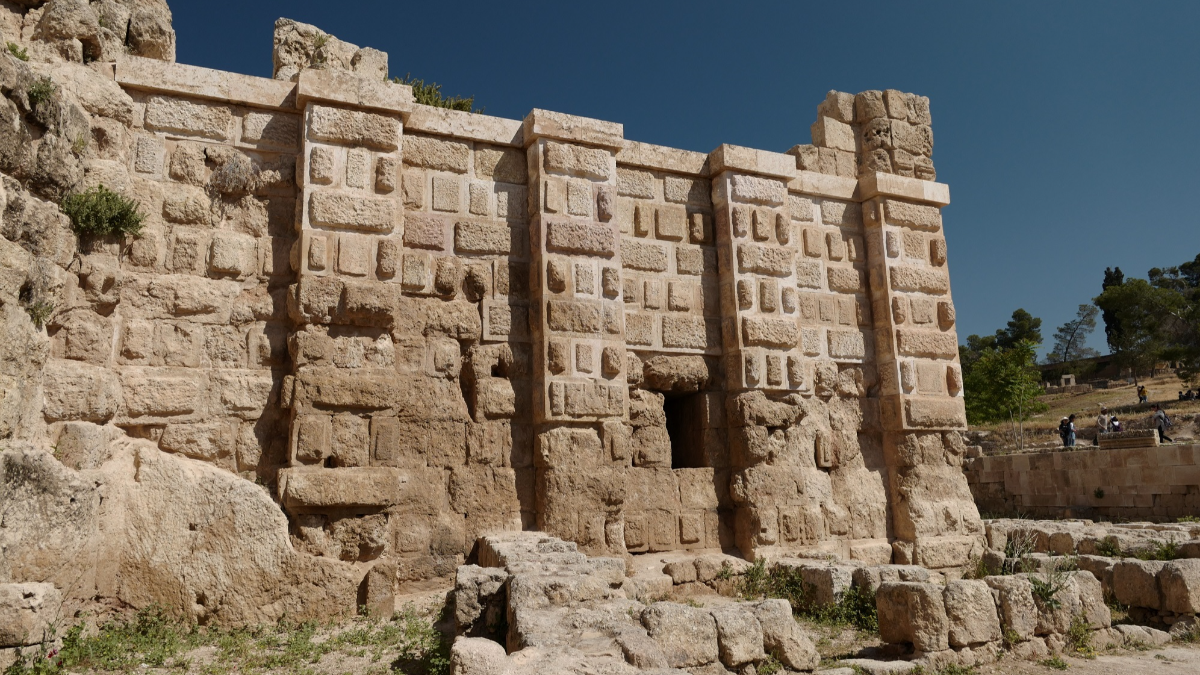
20231117
<La Vie Tang>A Rome Away From Rome

My next stop in Jordan is the ruins of ancient Jerash in the north, 50 kilometers away from Amman. An ancient Roman city with a long history of more than 3,500 years is now the largest and the most intact ancient satellite town outside Italy, so has been highly commended as the ‘Pompeii in the Middle East’.
Jerash was first inhabited in as early as 1600 BC, people had since then lived and multiplied on this land. The urban constructions were carried out during the ancient Greek period. Ever since 63 BC when the Roman army captured the surroundings of Syria and Jerash, the city had gradually taken shape from putting up Roman-style buildings, and Jerash started to develop from these past achievements thereafter. With the Roman Empire advancing amidst turbulence and its successors of the Byzantine Empire, the Umayyad dynasty and the Abbas dynasty, going through the rise and fall, the city had been thrown into many wars and chaos. At the height of splendors, the city with a population of more than 20,000 became the trade center of the Middle East, and once achieved fame as one of the four Mideast major cities. Afterwards, Jerash had experience several earthquakes, while the massive one in 749 AD contributed to the utter devastation of the city where buildings were severely damaged and wiped out. Until the 9th century, the desert of the ruins had disappeared from view. A German explorer named Urich Jasper Seetzen unearthed some of the remains in 1806 when he passed by the place. The antiquities from the lost civilization has been gradually revealed through a series of archeological excavations and repairs which commenced from the 1920s.
I followed the lead of the tour guide, starting my tour from the triumphal arch. The triumphal arch, also known as Arch of Hadrian, was built to honor the visit of the then Emperor Hadrian (Publius Aelius Traianus Hadrianus Augustus) to the city, and not only was the arch named after him, but a grand celebration took place for his coming. It is recorded in the history that this Roman emperor was wealthy in knowledge and very fond of travelling as he journeyed to a number of colonial provinces governed by the Roman Empire during his reign. Edward Gibbon, a British historian, once described the emperor in The History of the Decline and Fall of the Roman Empire that ‘Hadrian’s entire life is almost on the endless journey’. As the astute spare the astute, the brave knows the brave; I stick to my hobby of travelling in the whirl of business, and if I could travel back through time to find him, the topic of travelling obviously would strike a responsive chord between us.
Traces from the passing time never detracted from the magnificence of this mighty triumphal arch, the core archway in the center and the two lateral archways on both sides of which are laid up by huge blocks. If you take a close look, you may be astounded by the exquisite patterns engraved on the columns, rough but with a very elegant touch. Across the arch there is a Roman racecourse on the left, approximately 260 meters long and 50 meters wide, with a stone stand at one side that is able to accommodate more than 15,000 audiences. In the past, it held horse races, chariot races and athletic contests and once was the largest site in the entire city of Jerash. The stand provides a panoramic view of the whole race ground, which fired my imagination right in the midst of the carriage competition scene from the movie Ben Hur, and much of my mind was taken up with visualizing that scene. At that very moment all of a sudden, there sounded a burst of horns, and scenes of Roman horse racing and warrior fighting were filming right in the course, which produced the intense atmosphere of carriages galloping in those years.
Behind the racecourse, mottled and massy stone walls extend as far as the city. My tour guide explained that there are four city gates and more than 100 towers and platforms are arranged with certain spaces. We proceeded forward to the main entrance which is actually the dilapidated South Gate. Cross the gate, the former glory of the ancient city was about to be revealed.
The oval Roman square is very spacious in size, 90 meters long and 80 meters wide, surrounded by peristyles all in Ionic order that have been preserved quite intact. This form of order marks one of features in ancient Greek architecture, characterized by the use of a pair of downward volutes and the slender column, also laudatorily called female column. A sacrificial altar and a fountain used to stand in the middle of the square in old times but no longer exist. There is a colonnade street with an overall length of 800 meters connecting the Roman square. Huge columns of which are of Corinthian order, another ancient Greek order, and are slenderer and more ornate than the Ionic order, with the capital like acanthus leaves growing around a votive basket. According to the tour guide, this colonnade street established in the 1st century was originally lined by columns of Ionic order which were replaced into Corinthian order until the 2nd century.
Up from the oval square there are two temples on the hill, the Temple of Zeus and the Temple of the Moon God Artemis, as well as two theaters. The north one offers seats for more than 1,600 audiences to enjoy the concert and recitation while the south provides venues for annual Jerash art performance festival with the accommodation for 3,000 people. We had a chance encounter with a street performance, the performer was sitting on the stone stands and fiddling clearly with the instrument and the drum.
Despite of the severe collapse of the temple, it still retains a couple of soaring columns. The insignificance of human beings was so obvious by comparison with the grandeur of the columns. The height dominates a panoramic view of the whole city which boasts so many towering columns standing for thousands of years. These architectures bear the glorifying reputation of ‘City of Columns’ and inspire the imagination of how glorious the city used to be. No wonder the city, though buried for thousands of years, is also called a Rome away from Rome. When I took a stroll amidst the dilapidated ruins scattered in the city, I couldn’t help but lament the vicissitudes of the world.
In addition to Greek and Roman architectures in the city, there once built 15 Christian churches but with only remnants of the past left. Most of the churches were erected between the 5th and the 6th century, floors of which are inlaid with gorgeous mosaic patterns in a riot of color. Unhappily I was not able to enter and appreciate its interior due to the compressed schedule.
Jerash is not small in size overall, so if time allows, a one-day tour around the city is highly recommended. It gives you an immersive experience and understanding about its developments, which is fay way beyond what the words and pictures could offer.
Tang Yu Lap
Hantec Honorary Advisor









Take a photo with a group of lively Jordanian girls at the ruins
Previous Article
Extended Reading
Mr. Tang Attended the Seminar on Cooperation between Shaanxi and Foreign-funded Enterprises in Guangdong-Hong Kong-Macao Greater Bay Area
BY Group Branding and Promotion FROM Hantec Group
積極行善 送贈愛心關懷禮品包
BY Group Branding and Promotion FROM Hantec Group
第八屆「見習行政人員」計畫正式啟動
BY Andrew lou FROM Hantec Group
11/F, Gold & Silver Comm. Bldg., 12-18 Mercer Street, Sheung Wan, Hong Kong
Room 1214, Block B, Shenzhen International Chamber of Commerce Building, Fuhua 1st Road, Futian District, Shenzhen
A753, 7F, Crystal Galleria, Yuyuan Road, Jing'an District, Shanghai
Hong Kong : (852) 2916 9000
China - Shenzhen : (86) 755-8278 8726
China - Shanghai : (86) 21-5298 3788
5th Floor, 34-36 Gray’s Inn Road, London WC1X 8HR
(44) 20 4586 8213